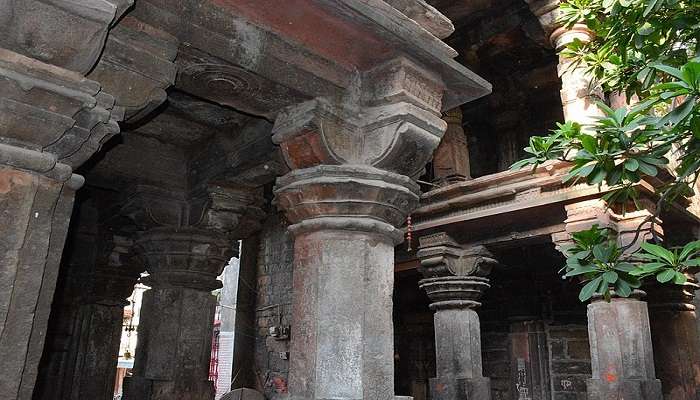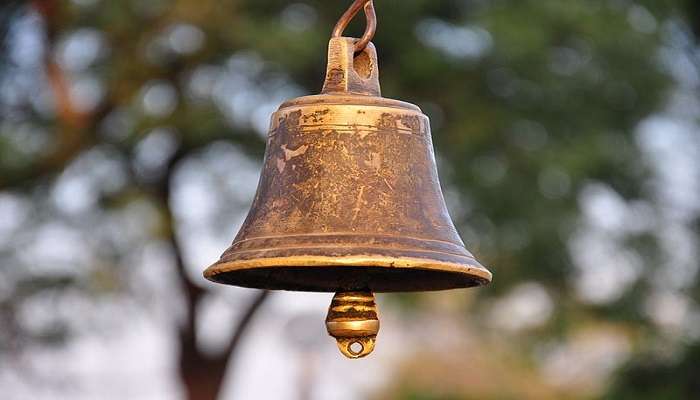The Historical Importance Of Chaubis Khamba Temple In Indian Heritage To Visit In 2026

Chaubis Khamba Temple is one of the masterpiece evidences of India’s rich historical and cultural heritage testimony. The temple received its modern name because 24 gorgeously carved pillars are installed inside. In this way, the temple loudly proclaims the marvels of architecture and the glory of the spiritual world. The Chaubis Khamba Temple is important not only from the point of view of worship but also as a site of historical interest for people from the world of history, archaeology, and many tourists.
Overview Of Chaubis Khamba Temple

The Chaubis Khamba Temple is an essential structure of the early mediaeval period. True to its name, which means “twenty-four pillars,” this is this temple’s mammoth feature. Every single pillar is carved differently, marking that age’s excellent quality. The two essential deities of this temple are Lord Brahma and Lord Vishnu; the presets of the cosmic functions of creation and preservation. The temple style is fundamentally an example of the Gupta architecture style, typified by simplicity, grace, symmetry, and proportion. The Temple is on an elevated platform and has a centrally situated sanctum with a pillared hall in the front.
The pillars are carved with mythological scenes, gods, and floral patterns. At the entrance are two fine statues of lions standing face to face, which signify strength and gallantry. The Chaubis Khamba Temple is not just a religious place; it represents a historical monument that bears as much significance in the annals of time as is possible toward the bundle of cultural and artistic works that ancient India could achieve. The temple’s architecture indicates that this was an age of great artistic and cultural fusion in the region at the time of construction.
Also Read: Bhoora Khon Waterfall
Also Read: Bhoora Khon Waterfall
1. The Unique Pillars Of Chaubis Khamba Temple

Each pillar of the Chaubis Khamba Temple is different; there are 24 pillars altogether. These are not just any pillars but sculptures that display the early history of India, the myths and culture of the Indians. This place is full of sophisticated engravings of deities, various mythical creatures, and floral designs. These pillars are made from sandstone, which is locally available, hence the colour and texture.
These carvings illustrate the religion and culture modelled then: scenes from the Hindu epics of Ramayana and Mahabharata, each depicted with gods like Lord Vishnu, Lord Shiva, and Goddess Parvati. They are also done in the most intriguing geometric shapes and floral patterns, typical of the Gupta architectural style.
Tip: Watch closely the carving of each pillar and the stories inscribed in the form of a carving on every pillar.
Major Attraction: The 24 differently carved ornate pillars detailed in the site have become greatly popular, adding to the early-age artists’ capability indicators.
2. The Architectural Brilliance Of Chaubis Khamba Temple

Chaubis Khamba Temple is an architectural marvel that underlines the genius of ancient Indian architecture. It is an impeccable mesh of functional and aesthetic features, thus becoming an outstanding example of the Gupta style of architecture. The temple is made of locally available sandstone, used with exceptional talent. It could be solid and aesthetic enough to give the temple colour and texture.
The overall architecture in this temple is quite simple yet beautiful: only one central sanctum and one pillared hall. The sanctum enshrines the idols of Lord Brahma and Lord Vishnu, which the devotees worship. The devotees have a ‘mandapa’ or pillared hall at their disposal wherein all kinds and forms of religious ceremonies and congregations occur. Indeed, the hall is built spacious and furnished with proper ventilation and use of natural light inside.
Tip: If you want to view the temple’s architecture with the best natural light, consider visiting during the early morning or late afternoon.
Major Attraction: It regains its appeal because of the architectural design; the well-carved pillars and the temple entrance encourage people from all corners to come.
Related Post: Rock Shelters Of Bhimbetka
3. The Historical Significance Of The Temple

In aesthetic terms, the Chaubis Khamba Temple might be one of the best pieces that have enriched this divine land. According to legends, this temple was constructed during Gupta’s reign, one of the most prosperous and culturally rich periods ever.
It is also called the “Golden Age” of India, and it is known for its advancement in arts, architecture facilities, literature, and sciences. The Chaubis Khamba Temple stands as a symbol of the glorious height of architecture and artistic representation that the Gupta period had come to attain.
Tip: Ask about the temple’s inscriptions and artefacts to learn more about what it represents in history.
Major Attraction: History enthusiasts would be highly attracted to this temple because it represents being founded during the Gupta period and the various artefacts excavated from the site.
4. The Cultural Importance Of Chaubis Khamba Temple

Chaubis Khamba Temple stands as a centre not only in terms of its religious and historical status but also in terms of cultural relevance. Thus, religious functions limited to cultural ones create this temple as a hub for cultural activities and events. Major Hindu festivals such as Diwali, Navaratri, and Maha Shivaratri attract a lot of pomp and festivity with cultural performances such as classical music and dance performances.
It also holds an essential place in the social life of the local community: this is not only a place to worship but also to socialise, exchange culture, and interact. The annual festival of the temple, “Chaubis Khamba Mahotsav,” is a potential cultural event in which Ujjain attracts devotees and tourists from every part of the country. The festival involves religious rituals, cultural programs, and a large procession to explain the vibrant artistic tradition of the region.
Tip: Visit during major festivals to see the cultural vibrancy and festivities of the temple.
Major Attraction: The temple’s cultural significance, whether in its festivals or the cultural events inside it, is a significant draw.
Related Post: Gopal Mandir Ujjain
5. Visiting The Temple: Tips And Information

This kiosk is a rewarding visit to the Chaubis Khamba Temple, offering a unique blend of history, culture, and spirituality. The temple is in Ujjain, a city in Madhya Pradesh; it is well-connected by road, rail, and air. The nearest railway station is the Ujjain Junction, and the closest is Devi Ahilya Bai Holkar Airport in Indore.
The temple is open to the public all year round without an entrance fee. The winter months between October and March are the best time when the climate is fresh enough to indulge in any tourist activity. The timings are early morning to late evening. Early mornings or late afternoons are good times for peacefully attending to prayers and escaping the scorching sun.
Tip: Opt for a local guide to understand the significance and history of the temple.
Major Attraction: The temple’s accessibility, guided tours, and the local attractions near it make it convenient and full of enlightenment for visitors.
You May Also Like To Read: Orchha Wildlife Sanctuary
Chaubis Khamba Temple is an absolute beauty of Indian heritage that combines history, culture, and spirituality into one. The highly complex architecture, rich history, and cultural importance of the structure make it a must-visit location for anyone interested in tracing the ancient heritage of India. One might be a history buff, culture lover, or spiritual soul: there is something for everyone at the Temple. Add this lovely temple to your go-see list and witness the grandness of India’s architectural and cultural heritage in person. Book your trip to Madhya Pradesh today to experience the magic of the Chaubis Khamba Temple.
For our editorial codes of conduct and copyright disclaimer, please click here.
Cover Image Credit: Sunil Ujjain for Wikimedia Commons
Frequently Asked Questions About Chaubis Khamba Temple
What is the importance of the 24 pillars at the Chaubis Khamba Temple?
Which are the presiding deities worshipped at the Chaubis Khamba Temple?
The temple is dedicated to Lord Brahma and Lord Vishnu, symbolising creation and preservation.
What are the best times to visit the Chaubis Khamba Temple?
The best time to visit Chaubis Khamba Temple is between the winter months, preferably from October to March, when the weather is soothing and pleasant.
What is the Entry fee for Chaubis Khamba Temple?
No entry fee is either charged or taken to enter Chaubis Khamba Temple but you can donate the money as per your choice.
How to reach Chaubis Khamba Temple?
A vehicle goes to this spot, and it will only give all the ideas, histories, and significance regarding the temple.
People Also Read:
Sri Raja Rajeswari Temple Manchalamma Temple Sri Anjaneya Swamy Temple

Unveil the hidden treasures of the globe and turn every travel dream into reality. As a Content Writer, I am passionate enough to craft stories from ancient wonders to modern marvels. My words paint the picture-perfect itinerary for unforgettable experiences. Let my words be your trusted guide to immerse in the diverse culture and discover the beauty of the unknown.











